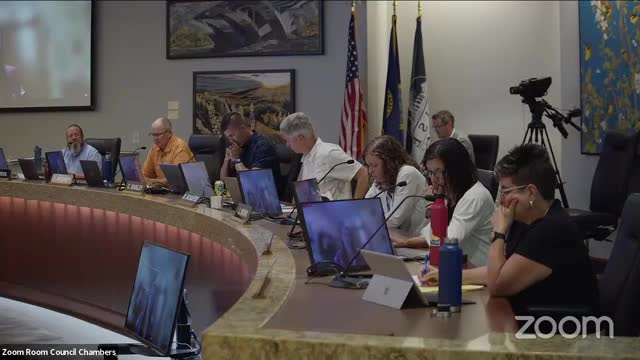Zoning Code Changes Spark Controversy Over Airport Development
July 09, 2024 | Boise City, Boise, Ada County, Idaho

This article was created by AI summarizing key points discussed. AI makes mistakes, so for full details and context, please refer to the video of the full meeting. Please report any errors so we can fix them. Report an error »

In a recent government meeting, officials discussed the implications of the modern zoning code on residential development near the airport, particularly focusing on the conditional use permit (CUP) process. The CUP allows for increased density in certain projects, a shift from the previous zoning regulations that did not offer such flexibility. This change aims to accommodate unique circumstances in development proposals while still considering the airport's operational impacts.
Commissioners raised concerns about the subjective nature of the airport's assessments regarding land use compatibility. A notable example discussed was the Elder Street Apartments project, which was denied due to its location in a high noise exposure area, deemed incompatible with airport operations. In contrast, a hotel project in the same vicinity was approved, highlighting inconsistencies in how these standards are applied.
The conversation also touched on the recent approval of the Canyon Ridge development, which officials later acknowledged should not have been permitted under ideal circumstances. This inconsistency in decision-making has raised questions among commissioners about the criteria used to determine acceptable density levels near the airport.
One commissioner questioned why a density of five dwelling units per acre was considered acceptable, while higher densities faced scrutiny. Staff explained that this threshold aims to minimize the number of residents exposed to noise impacts from airport operations, reflecting a balance between development needs and safety considerations.
The meeting underscored the ongoing challenges in aligning development goals with regulatory frameworks, particularly in areas affected by airport operations. As the city navigates these complexities, the need for clear and consistent guidelines remains a priority for officials and stakeholders alike.
Commissioners raised concerns about the subjective nature of the airport's assessments regarding land use compatibility. A notable example discussed was the Elder Street Apartments project, which was denied due to its location in a high noise exposure area, deemed incompatible with airport operations. In contrast, a hotel project in the same vicinity was approved, highlighting inconsistencies in how these standards are applied.
The conversation also touched on the recent approval of the Canyon Ridge development, which officials later acknowledged should not have been permitted under ideal circumstances. This inconsistency in decision-making has raised questions among commissioners about the criteria used to determine acceptable density levels near the airport.
One commissioner questioned why a density of five dwelling units per acre was considered acceptable, while higher densities faced scrutiny. Staff explained that this threshold aims to minimize the number of residents exposed to noise impacts from airport operations, reflecting a balance between development needs and safety considerations.
The meeting underscored the ongoing challenges in aligning development goals with regulatory frameworks, particularly in areas affected by airport operations. As the city navigates these complexities, the need for clear and consistent guidelines remains a priority for officials and stakeholders alike.
View full meeting
This article is based on a recent meeting—watch the full video and explore the complete transcript for deeper insights into the discussion.
View full meeting